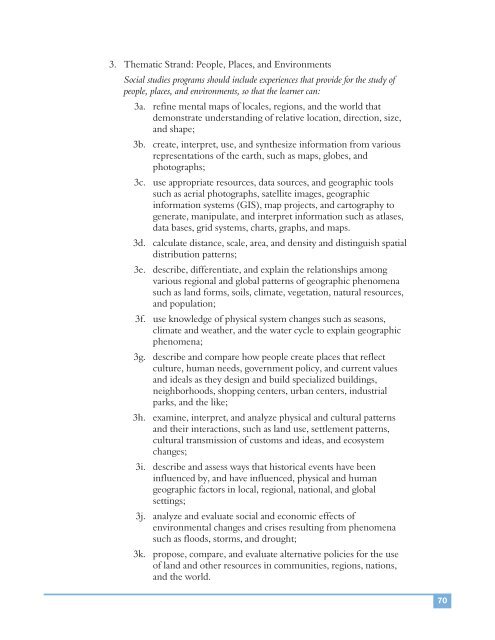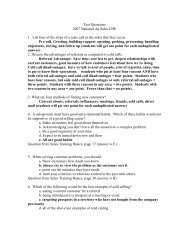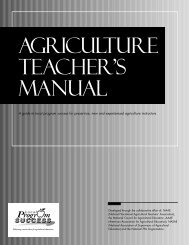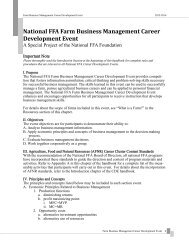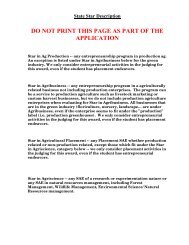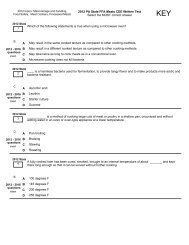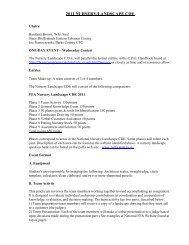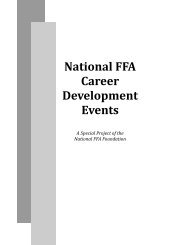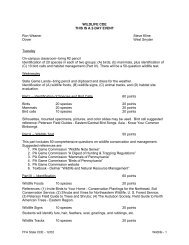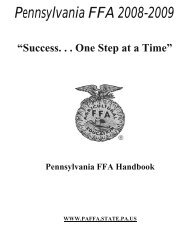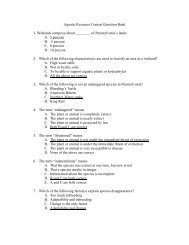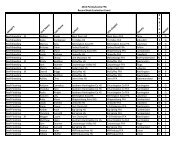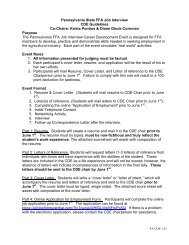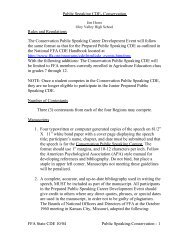AFNR Standards - National FFA Organization
AFNR Standards - National FFA Organization
AFNR Standards - National FFA Organization
You also want an ePaper? Increase the reach of your titles
YUMPU automatically turns print PDFs into web optimized ePapers that Google loves.
3. Thematic Strand: People, Places, and EnvironmentsSocial studies programs should include experiences that provide for the study ofpeople, places, and environments, so that the learner can:3a. refine mental maps of locales, regions, and the world thatdemonstrate understanding of relative location, direction, size,and shape;3b. create, interpret, use, and synthesize information from variousrepresentations of the earth, such as maps, globes, andphotographs;3c. use appropriate resources, data sources, and geographic toolssuch as aerial photographs, satellite images, geographicinformation systems (GIS), map projects, and cartography togenerate, manipulate, and interpret information such as atlases,data bases, grid systems, charts, graphs, and maps.3d. calculate distance, scale, area, and density and distinguish spatialdistribution patterns;3e. describe, differentiate, and explain the relationships amongvarious regional and global patterns of geographic phenomenasuch as land forms, soils, climate, vegetation, natural resources,and population;3f. use knowledge of physical system changes such as seasons,climate and weather, and the water cycle to explain geographicphenomena;3g. describe and compare how people create places that reflectculture, human needs, government policy, and current valuesand ideals as they design and build specialized buildings,neighborhoods, shopping centers, urban centers, industrialparks, and the like;3h. examine, interpret, and analyze physical and cultural patternsand their interactions, such as land use, settlement patterns,cultural transmission of customs and ideas, and ecosystemchanges;3i. describe and assess ways that historical events have beeninfluenced by, and have influenced, physical and humangeographic factors in local, regional, national, and globalsettings;3j. analyze and evaluate social and economic effects ofenvironmental changes and crises resulting from phenomenasuch as floods, storms, and drought;3k. propose, compare, and evaluate alternative policies for the useof land and other resources in communities, regions, nations,and the world.70


